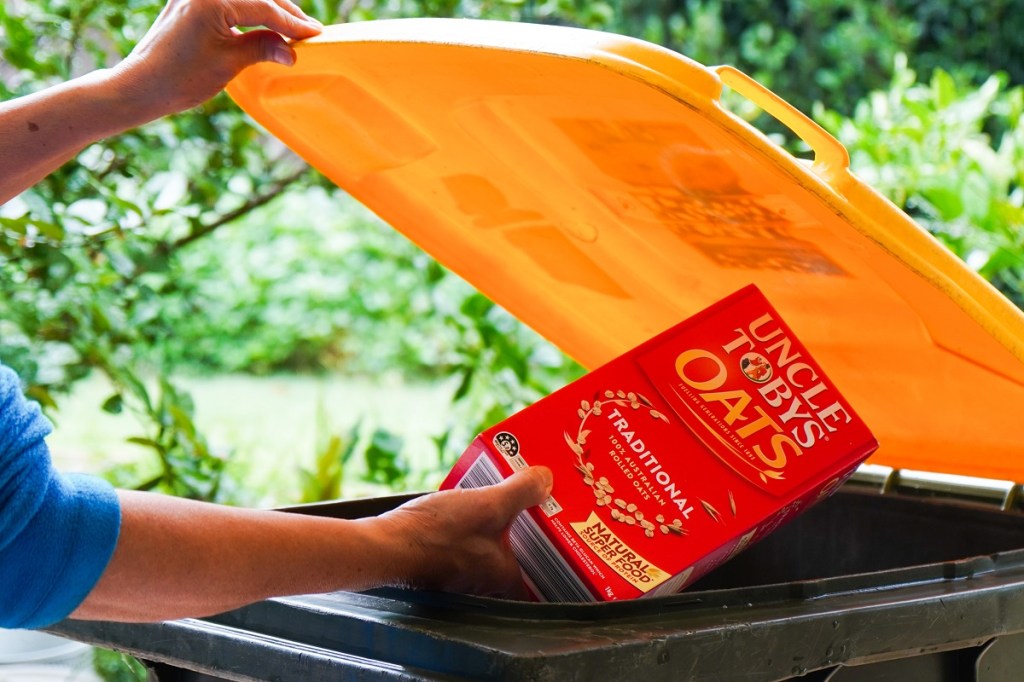A new survey conducted by WWF-Australia has found that more than 80 per cent of Australia’s favourite food products can’t be put into home recycling bins.
The survey assessed the recyclability of packaging in 82 popular food products and found that only 16 products were entirely kerbside recyclable. Forty-five of the products had some elements that needed to be taken to a collection point, and 21 were found to be difficult to collect and recycle.
Katinka Day, WWF-Australia’s No Plastics in Nature Policy Manager, said every product we buy should be recyclable.
“Our favourite products are creating a mountain of rubbish that can’t go into home recycling bins.
“Too often this packaging ends up in landfill or our oceans where it can do damage for hundreds of years. It’s avoidable, it’s needless, and it has to stop.
“Our survey found many cases of food packaging that could not be recycled at all. Brands should be doing better because recyclable alternatives are available.
“We need stronger rules to stop unnecessary plastic packaging and ensure that packaging can actually be recycled at home,” she said.
WWF-Australia chose six categories of food that have different packaging formats, including biscuits and crackers, breakfast cereals, yoghurt, confectionery, chips, and cheeses. From these categories, it surveyed products from the top-selling brands based on retail sales data.
Biscuits and crackers were among the worst offenders. None of the surveyed products could be entirely recycled at home, yet there are recyclable materials that brands could be using. This category was also prone to overpackaging, with many of the surveyed products wrapped in an outer casing, an inner plastic wrapper and a plastic tray.
There were clear winners in many of the categories. For cereals, Uncle Toby’s Oats uses a single cardboard box and displays clear recycling information. There were also a number of yoghurts with tubs, lids and foil that could all be recycled at home, including Chobani Yoghurt and Yoplait Strawberry Yoghurt.
The good news is the survey found almost half of the surveyed products use the Australasian Recycling Label (ARL), which tells you how to dispose of each packaging item.
“It’s great to see more and more products adding the Australasian Recycling Label to packaging. My advice to individuals is to ‘check it before you chuck it’ because the label will help you choose the right bin for your packaging,” said Ryan Collins, Head of Circular Economy Programs at Planet Ark, one of the experts who helped conduct the survey.
The packaging survey follows the release of Clean Up Australia’s annual Rubbish Report, which found food packaging accounted for almost 10 per cent of rubbish collected in 2020.
The Federal Government is expected to release a national plastics plan to increase recycling rates and reduce plastic pollution in March.
WWF-Australia is calling for this plan to make the Australasian Recycling Label compulsory and include mandatory rules that would require all packaging in Australia to be recyclable, reusable or compostable, and for plastic packaging to be recycled rather than end up in landfill.
“We have the opportunity to transform packaging in Australia and halt the amount of plastic pollution flowing into nature, but we need our governments to take the lead. Industries and individuals cannot solve the planet’s plastic problem alone,” said Day.
WWF-Australia worked with waste experts from Planet Ark, City of Sydney, Monash Sustainable Development Institute, Adaptation Environmental Support and the Australian Packaging Covenant Organisation on the survey.

